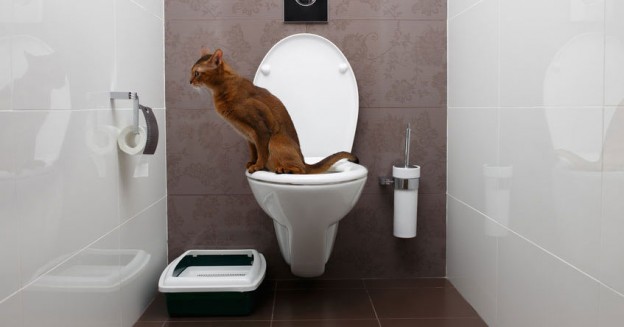Reasons You Should Never Flush Cat Poop Down Your Toilet - Important Facts
Schedule Your Job NowWhat are your thoughts and feelings on Don’t flush cat feces down the toilet?

Intro
As cat proprietors, it's necessary to be mindful of exactly how we deal with our feline buddies' waste. While it may appear convenient to purge cat poop down the commode, this method can have detrimental effects for both the environment and human wellness.
Alternatives to Flushing
The good news is, there are more secure and a lot more responsible means to dispose of cat poop. Consider the following choices:
1. Scoop and Dispose in Trash
One of the most typical technique of disposing of pet cat poop is to scoop it into a biodegradable bag and throw it in the garbage. Make sure to use a committed litter inside story and get rid of the waste without delay.
2. Use Biodegradable Litter
Select biodegradable feline trash made from products such as corn or wheat. These litters are environmentally friendly and can be safely taken care of in the garbage.
3. Bury in the Yard
If you have a backyard, think about hiding cat waste in an assigned area far from vegetable yards and water resources. Make certain to dig deep adequate to prevent contamination of groundwater.
4. Set Up a Pet Waste Disposal System
Purchase an animal waste disposal system especially made for cat waste. These systems make use of enzymes to break down the waste, reducing odor and ecological impact.
Wellness Risks
In addition to ecological concerns, purging feline waste can likewise position wellness threats to human beings. Cat feces may consist of Toxoplasma gondii, a bloodsucker that can create toxoplasmosis-- a potentially extreme illness, especially for expecting women and people with weakened immune systems.
Environmental Impact
Flushing cat poop presents damaging pathogens and bloodsuckers right into the water system, posturing a significant danger to water communities. These pollutants can negatively influence aquatic life and compromise water high quality.
Conclusion
Liable pet possession extends past giving food and sanctuary-- it likewise involves appropriate waste management. By refraining from flushing feline poop down the bathroom and going with alternate disposal techniques, we can decrease our environmental impact and safeguard human health.
Why Can’t I Flush Cat Poop?
It Spreads a Parasite
Cats are frequently infected with a parasite called toxoplasma gondii. The parasite causes an infection called toxoplasmosis. It is usually harmless to cats. The parasite only uses cat poop as a host for its eggs. Otherwise, the cat’s immune system usually keeps the infection at low enough levels to maintain its own health. But it does not stop the develop of eggs. These eggs are tiny and surprisingly tough. They may survive for a year before they begin to grow. But that’s the problem.
Our wastewater system is not designed to deal with toxoplasmosis eggs. Instead, most eggs will flush from your toilet into sewers and wastewater management plants. After the sewage is treated for many other harmful things in it, it is typically released into local rivers, lakes, or oceans. Here, the toxoplasmosis eggs can find new hosts, including starfish, crabs, otters, and many other wildlife. For many, this is a significant risk to their health. Toxoplasmosis can also end up infecting water sources that are important for agriculture, which means our deer, pigs, and sheep can get infected too.
Is There Risk to Humans?
There can be a risk to human life from flushing cat poop down the toilet. If you do so, the parasites from your cat’s poop can end up in shellfish, game animals, or livestock. If this meat is then served raw or undercooked, the people who eat it can get sick.
In fact, according to the CDC, 40 million people in the United States are infected with toxoplasma gondii. They get it from exposure to infected seafood, or from some kind of cat poop contamination, like drinking from a stream that is contaminated or touching anything that has come into contact with cat poop. That includes just cleaning a cat litter box.
Most people who get infected with these parasites will not develop any symptoms. However, for pregnant women or for those with compromised immune systems, the parasite can cause severe health problems.
How to Handle Cat Poop
The best way to handle cat poop is actually to clean the box more often. The eggs that the parasite sheds will not become active until one to five days after the cat poops. That means that if you clean daily, you’re much less likely to come into direct contact with infectious eggs.
That said, always dispose of cat poop in the garbage and not down the toilet. Wash your hands before and after you clean the litter box, and bring the bag of poop right outside to your garbage bins.
https://trenchlesssolutionsusa.com/why-cant-i-flush-cat-poop/

Do you really like more info about How to Dispose of Cat Poop and Litter Without Plastic Bags? Create a remark directly below. We will be glad to know your thinking about this article. We hope to see you back again later on. Kindly take a moment to share this blog posting if you liked it. Thanks a lot for going through it.
Book Appointment